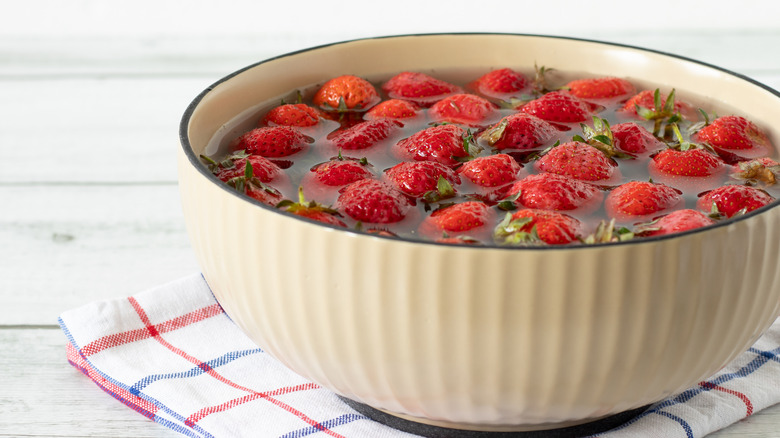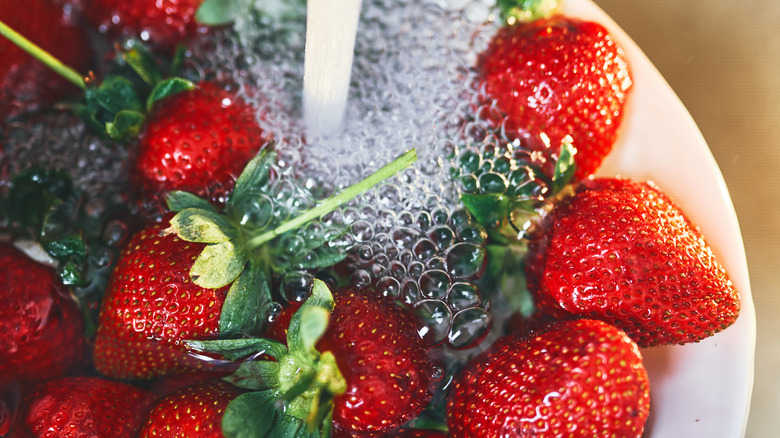Stretch The Lifespan Of Your Strawberries With A Simple Wash
We may receive a commission on purchases made from links.
There are plenty of mistakes a person can make when buying strawberries, and those potential missteps don't end when you get those delicious treats home. If you're not careful, the strawberries you bought and hoped to snack on throughout the week will mold long before you can enjoy them all. Washing your strawberries before stashing them in the fridge will help extend their lifespan and prevent bacteria and mold from taking over, but it turns out there's a way to make your berries' bath a lot more effective. To wash your strawberries in the most effective way possible, turn up the heat and make their bath a hot one.
Washing strawberries in water that's between 110 degrees Fahrenheit and 130 degrees Fahrenheit can extend the life of your berries. It cleans better than cold water but won't damage the fruits. If shooting for an exact temperature sounds too extreme just for washing some berries, you can use hot water from the tap to achieve comparable results. For those who do want to be precise, fill a bowl with hot water and use a handy device like this Yacumama digital water thermometer to check the temperature.
Place your strawberries in the hot bath, and then stir, or rather, whoosh the berries around while they're fully submerged for about 30 seconds. Place the washed strawberries on a towel-lined rack to air dry, or use a salad spinner (also lined with towels). Refrigerate your strawberries in a container that allows for air circulation, and they'll stay notably fresh for about a week — or freeze fresh strawberries for longer-term storage.
Moisture and mold are the enemies of strawberries
It's best to use hot water instead of cold or room temperature water when trying to prevent mold growth, as hot water effectively kills spores that will lead to mold growth, as well as some surface bacteria. By cleaning them this way, the strawberries won't last forever, but they'll be preserved for longer than if they were rinsed in cold water or not rinsed at all.
Strawberries are also incredibly prone to mold, thanks to the high levels of moisture that they carry — this is why it is particularly important to dry them well after washing. If one berry gets mold on it, it can ruin all of the other berries it shares a container with. This is because not all mold is visible. If you see a fuzzy or discolored patch on the surface of soft fruits like berries, the mold's root thread has already grown into the food and contaminated it. Since berries are often stored side-by-side, this root thread can grow onto the berry next to the one showing obvious signs of mold.
For this reason, you should never try to eat around the mold. Cutting the gross, fuzzy, or speckled part out of the berry to eat the rest can potentially put you at risk of foodborne illness. So, the next time you bring home some delicious strawberries, make sure to give them a hot bath and store them properly — you won't feel pressured to eat them immediately (unless you want to)!

